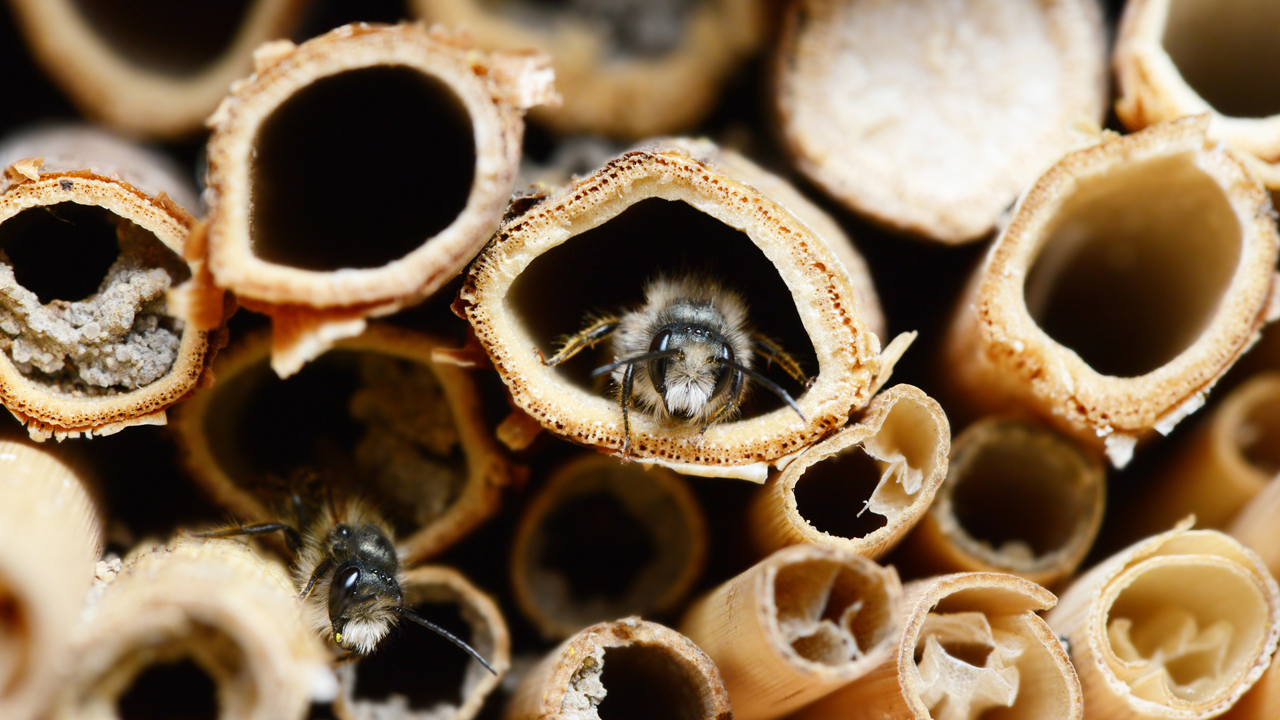
The dwindling population of bees, spread of cancer inside the body, and sexual assault on campus—these typically unrelated subjects have something in common: University of Minnesota researchers are working to find new ways to prevent them.
The Minnesota Futures Grant Program recently awarded a total of $495,281 to support three research proposals focused on improving human and environmental health through prevention. Minnesota Futures is an internal funding opportunity offered by the U’s Office of the Vice President for Research that promotes novel research to advance new ideas that cross disciplinary boundaries.
The three projects, highlighted below and selected from a group of 15 submitted proposals, will bring experts together to explore new ways to tackle challenges in health and the environment.
Art and Science of Nesting Bees
Principal investigator: Colleen Satyshur; Department of Ecology, Evolution, and Behavior; College of Biological Sciences
Bee populations are declining, which is bad news not just for the bees themselves, but for all of those who depend on the ecosystems and food supplies these pollinators support. While researchers have studied which flowers serve as important food sources for bees, there hasn’t been much buzz in the research community about bees’ nesting needs.
Colleen Satyshur and her team will combine public art with novel science to understand more about wild bees’ nesting needs and how artificial nesting sites can help bees flourish. They will also use cutting-edge DNA sequencing techniques on natural nest materials, made up from a composite of different plants that bees chew up and mix together, to identify the specific plants bees need when building their nests. The researchers will share the conclusions of the project with habitat managers, gardeners and the general public in an easy-to-understand form to help improve nesting environments.
Meanwhile, artists involved in this project will tap the aesthetic qualities of nesting structures to convey scientific knowledge to the public in a visually compelling way. A large bee nest sculpture will capture viewers’ imaginations and help them experience the excitement of scientific discovery. The sculpture is intended for display at the Weisman Art Museum on the U’s Twin Cities campus.
The University Sexual Violence Prevention (U-SIREN) Collaboratory
Principal investigator: Carolyn Porta, Population Health and System Cooperative, School of Nursing
Sexual assault is a serious public health problem in universities across the country. Female college students are more likely to experience sexual violence than any other female age group, and 18- to 24-year-old men in college are five times more likely to experience sexual assault than their peers not in college.
Carolyn Porta and her team will lead a project to establish the University Sexual Violence Prevention (U-SIREN) Collaboratory, which brings together researchers and students committed to the prevention of sexual violence among college students. U-SIREN collaborators will study underexamined but crucial aspects of sexual violence prevention, such as potential perpetrators on college campuses and normalization of rape culture, to inform future education and outreach.
The research team combines strengths in sexual violence prevention and response, college student health promotion, anthropology, rhetoric and discourse, geographical information system mapping and spatial analysis, and community-based participatory research.
Customized Radio-Frequency Identification Nanowire Tags for Exosome Enrichment in Blood Biopsies
Principal investigator: Bethanie Stadler, Department of Electrical and Computer Engineering, College of Science and Engineering
The first step in fighting cancer using personalized medicine is finding its molecular “calling card” in the body and examining it through a blood or tissue sample. Blood samples, or biopsies, are safer and less invasive than tissue biopsies, but there’s a catch—finding these calling cards in the blood is currently next to impossible.
Bethanie Stadler, along with Jaime Modiano from the College of Veterinary Medicine and Rhonda Franklin from the College of Science and Engineering, aim to improve blood biopsies for personalized cancer treatment. They plan to first “feed” cancer cells a supply of magnetic nanowires, which the cells will internalize and package into exosomes—the messenger vesicles released by cancer cells that normally pay a role in helping cancer survive and spread in the body. Researchers can learn more about each type of cancer and its spread in the body by studying exosomes as part of a biopsy.
When it comes time to conduct the biopsy, the researchers will catch the exosomes using magnetic fields, and then they will use radio frequencies to detect exactly which nanowires—and, therefore, which exosomes—are in the body. The detection system is essentially a form of “barcoding” through radio frequency identification (RFID). The process could make blood biopsies faster and more cost-effective, lowering the barriers for personalized treatment.
About Minnesota Futures
Modeled after the National Academies Keck Futures Initiative, the Minnesota Futures program supports extraordinary research by nurturing interdisciplinary ideas. The program helps develop projects to a point where they become competitive for external funding.
Since 2008, Minnesota Futures has supported research by faculty who go on to win substantial grants and whose innovations reach the market to potentially improve the lives of millions. The grants, supported by technology commercialization revenue, cover expenses of up to $250,000 over two years.
Learn more about the Minnesota Futures Grant Program and see past award recipients.